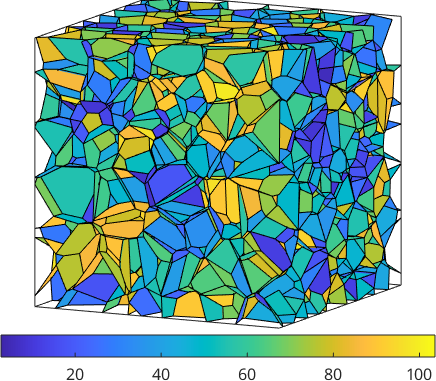Three dimensional grain share many of the properties of two dimensional grains, e.g. grains.meanOrientation. However, the geometric properties are quite different. These are
|
numPixel |
number of pixels per grain |
volume in µm³ |
|
|
numFaces |
number boundary elements per grain |
surface area in µm² |
|
|
diameter in µm |
caliper |
not yet implemented |
|
|
perimeter of a circle with the same area |
radius of a circle with the same area |
||
|
perimeter / equivalent perimeter |
is it a boundary grain |
||
|
TODO |
TODO |
||
|
number neighboring grains |
list of boundary faces |
||
|
grains.V |
vertices |
the geometric center |
We start our discussion by importing some sample data set of three dimensional grains
mtexdata NeperGrain3d
plot(grains,grains.meanOrientation,'micronbar','off')
% set camera
setCamera(plottingConvention.default3D)grains = grain3d
Phase Grains Volume Mineral Symmetry Crystal reference frame
2 1000 1e+06 Quartz 321 X||a*, Y||b, Z||c*
boundary faces: 7163
Properties: meanRotation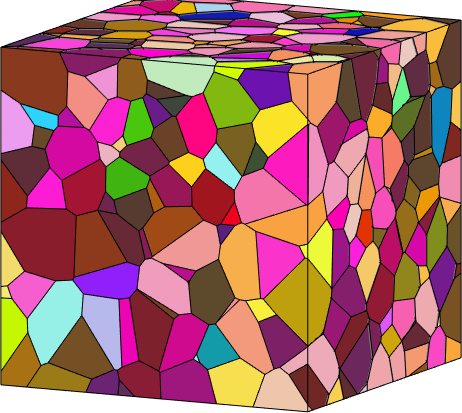
Grain volume
The most basic properties are diameter, surface and volume. Those can be computed by
grains(9).diameterans =
16.8007grains(9).surfaceans =
537.4238grains(9).volumeans =
860.4643The units are µm, µm² and µm³. We may analyze the distribution of grains by grain volume using a histogram.
close all
histogram(grains.volume,20,'FaceColor',grains.color)
xlabel('grain volume in µm³')
ylabel('number of grains')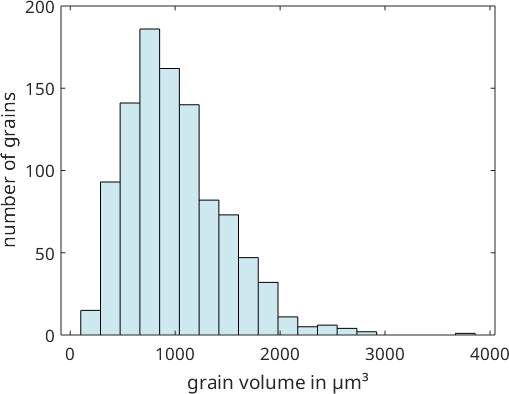
Note that in the above histogram all grains contribute equally independently of their size. We obtain a more realistic histogram if we do not plot the number of grains at the y-axis but its total volume. This can be achieved with the command histogram(grains).
histogram(grains,20)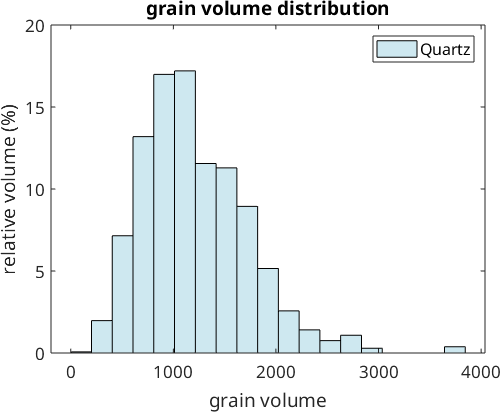
Similarly, we can visualize the distribution of surface or diameter with respect to grain volume or number of grains.
histogram(grains.surface,'FaceColor',grains.color)
xlabel('surface (µm²)')
ylabel('number of grains')
figure
histogram(grains,grains.surface)
xlabel('surface (µm²)')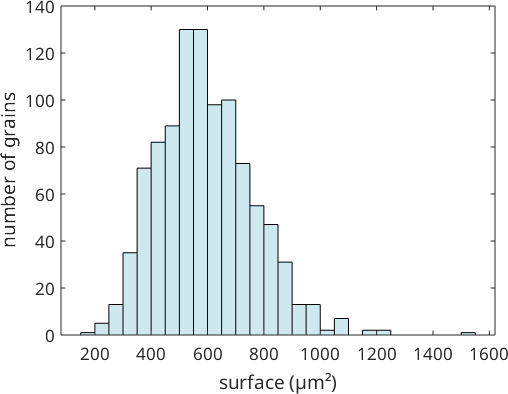
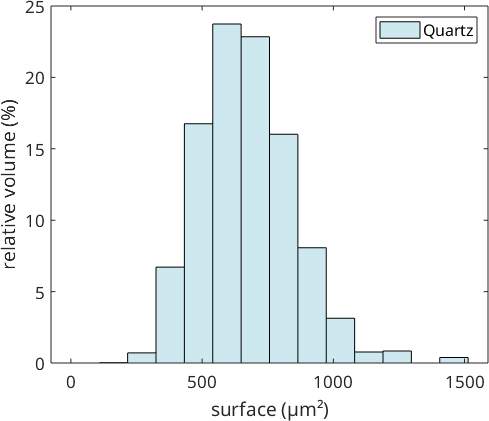
We may also investigate the correlation between any properties using a scatter plot. Almost surely, we find a relationship between the grain diameter and the volume.
scatter(grains.volume.^(1/3), grains.diameter)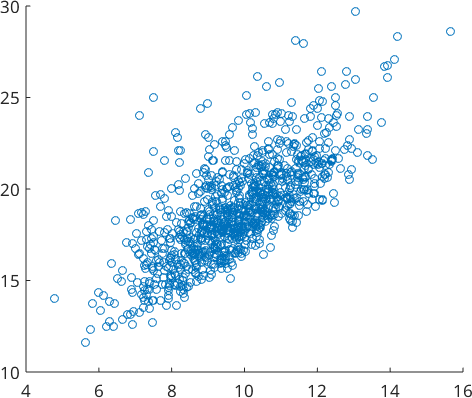
Ellipsoid Based Properties
Similarly as for two dimensional grains the command principalComponents computes the principle axes a, b and c of each grain. These can be interpreted as the half-axes of an ellipsoid fitted to the grain.
[a,b,c] = principalComponents(grains);Lets use these half-axes to visualize the 3d-grains as ellipsoids colorized by the grain orientation. This is done using the command plotEllipsoid
% compute the color for each ellipsoid
cKey = ipfColorKey(grains.CS);
color = cKey.orientation2color(grains.meanOrientation);
plotEllipsoid(grains.centroid,a,b,c,'faceColor',color);
Vertices, grain and surface centroids
Each grain has a set of vertices grains.V and a centroid grains.centroid. Furthermore, each grain boundary element has a centroid. Lets visualize those quantities.
close all
plot(grains(5),'FaceAlpha',0.5,'linewidth',2)
hold on
plot(grains(5).centroid)
plot(grains(5).V)
plot(grains(5).boundary.centroid)
hold off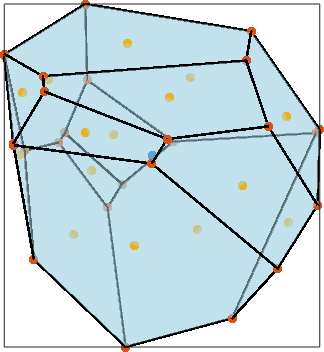
Grain boundary properties
The grain boundary elements the have the following geometric properties
|
area |
area in µm² |
N |
normal direction |
|
diameter |
diameter in µm |
perimeter |
perimeter in µm |
|
curvature |
TODO |
||
|
grainId |
neighboring grain ids |
misorientation |
misorientation |
Let us first visualize the grain boundary normals
hold on
quiver(grains(5).boundary,grains(5).boundary.N,'antipodal','linewidth',2)
hold off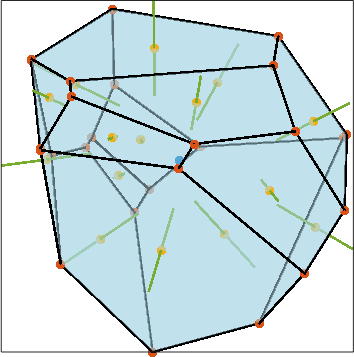
In the next plot we colorize the boundary planes by the misorientation angle of the neighbouring grains.
close all
plot(grains.boundary('indexed'),...
grains.boundary('indexed').misorientation.angle./degree,'micronbar','off')
setCamera(plottingConvention.default3D)
colorbar('location','southoutside')